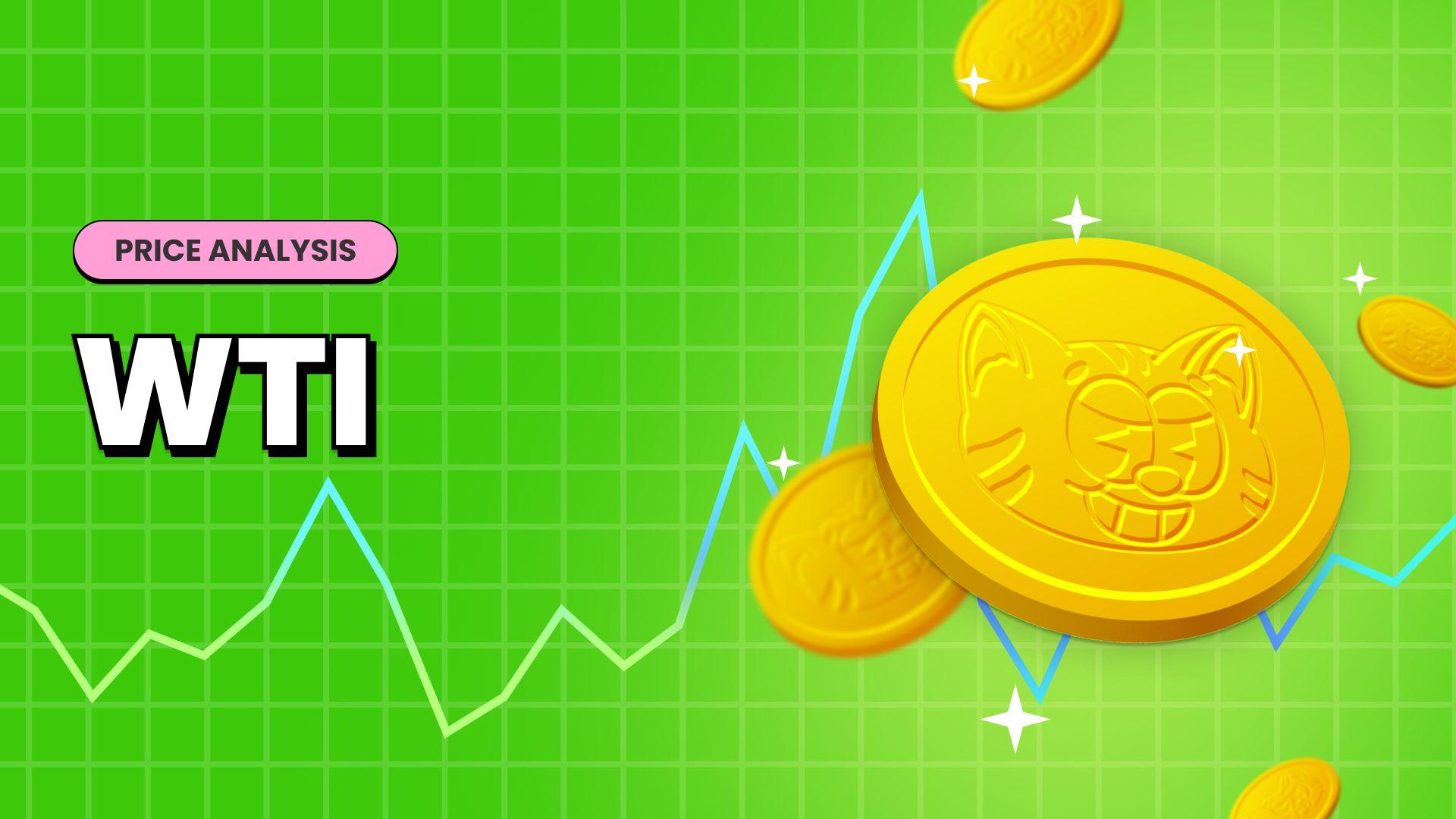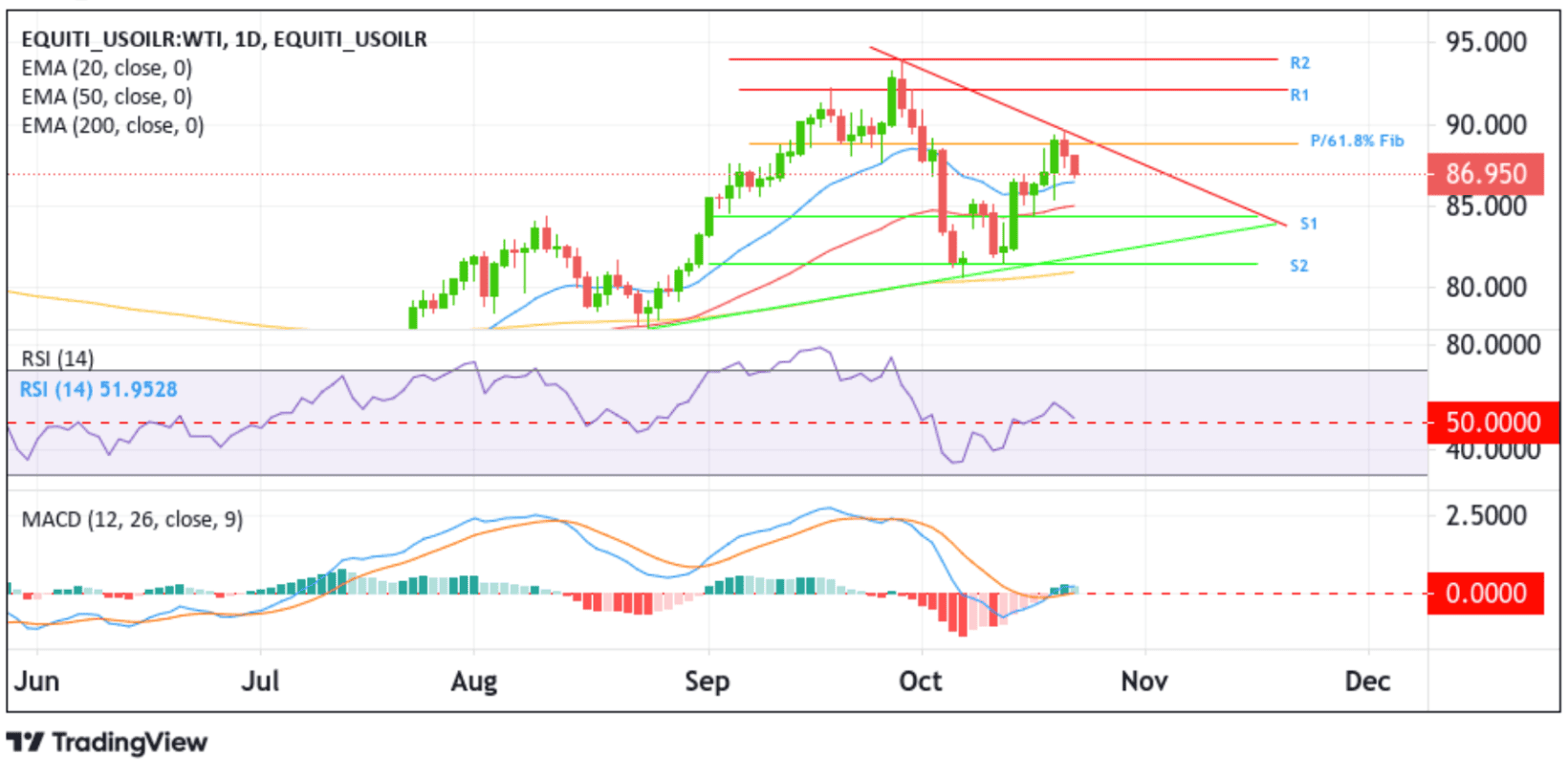US WTI Crude Oil Eases Below $87.00 A Barrel On Middle East Aid Support And Venezuela Oil Sanctions Lift Off






Key Takeaways:
- The US WTI crude oil price slipped below $87.00 a barrel, weighed by a combination of factors
- Aid convoy support plus the U.S. decision to lift sanctions on Venezuelan crude oil underpin crude oil
- Despite the negative factors, crude oil continues to be supported by further output cuts and receding bets for a Fed rate hike in November

The U.S. West Texas Intermediate (WTI) crude oil edged lower on Monday during the Asian session as diplomatic efforts to contain the conflict between Israel and Palestine grew over the weekend amid worries about worsening the situation in the rich oil region, which will impact global crude oil supply. As of press time, the precious black liquid slipped 72 cents/0.81% to trade at $87.19 per barrel, extending Friday's sharp pullback from the vicinity of the $89.81 level and starting a new week on the back foot.
According to an article by reuters.com, aid convoys arrived in the Gaza Strip from Egypt over the weekend as Arab leaders and foreign ministers gathered for a summit in Cairo, which could not yield a joint statement.
"Israel agreed to hold off its attack on Hamas following pressure from the U.S.," ANZ Research said in a client note. "This eased concerns that the Israel-Hamas war would spread across the Middle East and disrupt supplies." But in the latest developments, Israel bombarded Gaza with air strikes, and its aircraft struck Lebanon, causing fears that the Israel-Palestine war would engulf the rest of the Middle East region and, in turn, disrupt oil supplies.
Further contributing to the sentiment surrounding crude oil was the news last week that the United States gave a six-month waiver on the sanctions imposed on Venezuelan oil in return for the South American country's promise to hold free and fair elections. A sanctions waiver would allow more Venezuelan barrels on the market, though actual new oil production would take longer.
Despite the combination of negative factors, crude oil continues to be supported by further output cuts by the Organization of the Petroleum Exporting Countries (OPEC) and its affiliates, including Russia. Early this month, OPEC and its joint Ministerial Monitoring Committee (JMMC) reaffirmed their commitment to maintaining the group's oil output policy. It is worth noting that the oil production cuts in terms of barrels per day currently stand at more than 2 million, with top OPEC+ producers Saudi Arabia and Russia leading the group at 1 million and 300,000 barrels per day, respectively.
Receding bets for a Fed rate hike in November continue to weigh on the buck. This comes after the Fed chair declined to outrightly signal another rate hike after he mentioned that the Fed is "proceeding carefully" in evaluating the need for further rate increases. This remark left expectations that the Fed will keep its benchmark policy rate steady at the current 5.25% to 5.5% range at the November meeting.
As we advance, oil traders look forward to a slew of key macro data this week for fresh US WTI crude oil directional impetus. The U.S. API Weekly Crude Oil Stock and Crude Oil Inventories data set for release on Wednesday and Thursday are of greater importance for oil directional impetus.
Technical Outlook: One-Day US WTI Crude Oil Price Chart

From a technical perspective, the price's ability to rebound and move back below the pivot level, which coincides with the 61.8% Fibonacci Retracement level at the 88.822 level, supported the case for further southside moves. A further increase in selling momentum beyond the current price level will drag spot prices to tag the 20-day Exponential Moving Average (EMA) at 86.418, followed by the 50-day (red) EMA level at 84.964. Acceptance below these levels will pave the way for a move toward the 84.338 support level (S1). A subsequent break below this support level will pave the way for an extension of the bearish retracement toward the key support level plotted by an ascending trendline extending from the late-August 2023 swing low. A convincing move (bearish price breakout) below this support level will pave the way for a drop toward the technically 200-day solid (yellow) EMA level at 80.915. A clean move below this level will negate the bullish outlook and pave the way for aggressive technical selling around the dollar-denominated commodity.
On the flip side, if dip-buyers and tactical traders jump back in and trigger a bullish reversal, initial resistance comes in at 88.822. Buying interest could gain momentum if the price pierces this barrier, creating the right conditions to advance toward the key resistance level plotted by a downward-sloping trendline extending from the late-September 2023 swing high. A subsequent breach above this resistance level would reaffirm the bullish bias and pave the way for a rally toward the 92.115 resistance level (R1). In highly bullish cases, the US WTI crude oil could extend a neck toward the 93.968 resistance level (R2).